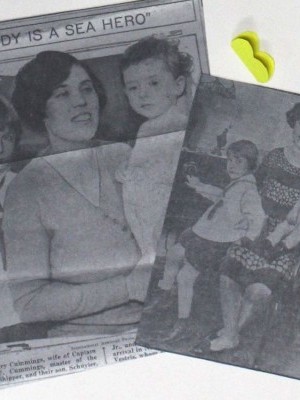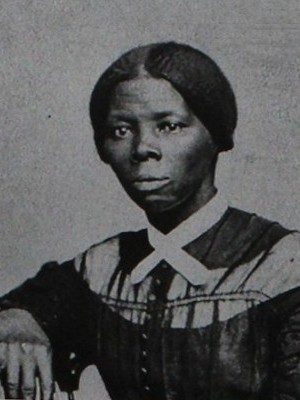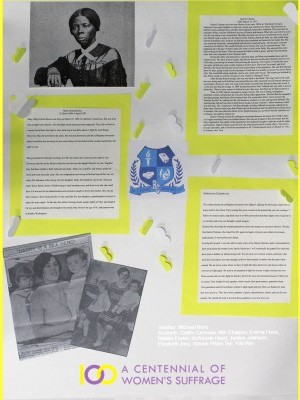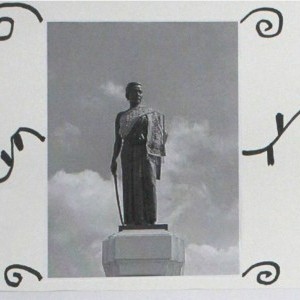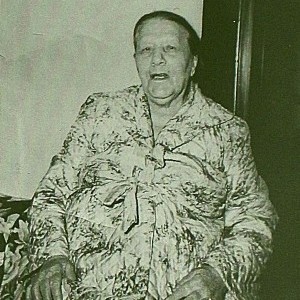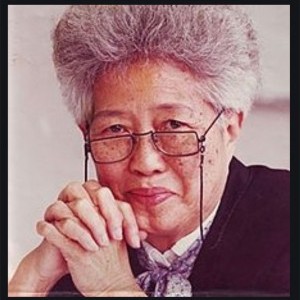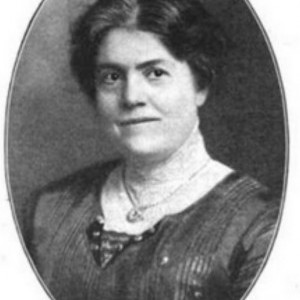Elizabeth joss
Rainier Christian High School | Auburn, WA | 12th Grade
Inspirational Family Member
Mary Emma Brown
Mary (May) Emma Brown was born on March 12, 1896, in Fairfield, Connecticut. She was born into an upper-class family who had high social status and were respected. They did not believe women should have the right to vote, believing it would be taboo to fight for such things. However, May did not believe the same. She was not allowed to join the suffragette movement since it would be too shocking for her social status, but she believed that women should have the right to vote.
She got married to Schuyler Cummings in 1920, the same year women gained the right to vote. However, the joke in the family is that she was the one who taught Schuyler to vote. Together they had three children, Ruth, Schuyler and John. Mary was a spitfire and always spoke her mind and made her point clear. She was independent and strong-willed, and stayed that way her entire life. Because of her strong will, her daughter, Ruth, developed the same trait.
There are many funny family stories of Ruth trying to raise her three sons, and there is no way she could have if it was not for her determination and resolution taught to her by her mother. She was the first woman in the Cummings family to vote and after her, her daughters and granddaughters got to enjoy the same rights. To this day, the whole Cummings family speaks highly of May, and laugh at the joy and determination she brought to the world. May lived to the age of 91 and passed in Seattle, Washington.
Historical Figure I Admire
Harriet Tubman
Harriet Tubman was born into slavery in the early 1820s in Dorchester County, Maryland. Her exact birth date is unknown, which was common for slaves. She was born to Harriet Greene and Ben Ross, and they had originally named her Araminta. They gave her the nickname Minty and her childhood was one of horror and trauma. When she was only five years old, she was taken to be a nursemaid. The baby she took care of was not allowed to cry and it was Harriet’s job to make sure she did not. If the mistress heard the baby cry, she would whip Harriet around the neck. Sources say that the scars remained on Harriet her entire life. She was extremely homesick, malnourished and had to be returned home. This became a normal occurrence for Harriet. She would be hired out, be beaten and sick, and be returned home. This happened up to the age of twelve when she went to work in the fields. She enjoyed this more than working in the house. This time caused her faith in God to grow, and she was becoming more and more cemented in her Christian faith.
During this time, she had gone to a grocery store and there was another slave and his master inside. The slave tried to escape and after he had run out of the door, Harriet stood in front of the door preventing the master from pursuing the runaway. The master, livid that the slave was gone, picked up a scale weight hoping to hit his slave. However, he missed and it hit Harriet in the head. She blacked out and was carried back to the plantation. She said that she laid there for days, going in and out of consciousness. It took her two months to recover but never did so fully. She would fall asleep randomly, and no one could wake her up. The master got irritated by this, but he could not sell her because no one wanted a “damaged” slave.
After she had healed enough, she was sent back to the fields. The long, hard work made her very strong and she could hold her own around the men. She was hired out and started earning a small salary. However, most of it went to her master but that little she got to keep she saved. It would one day help her escape. In 1844 she married John Tubman but very little is known about him. There is some reason to believe that he was a free man but no facts to prove it.
In 1849, Harriet managed to escape slavery. She was a strong, courageous, relentless woman, who decided she was done with being under oppression. The fact that she escaped is shocking enough, but Harriet did not stop at that. She wanted her fellow slaves to have the freedom she had. So, risking her life, she became a “conductor” on the Underground Railroad. The Underground Railroad was used to help slaves escape, having “stations” where runaways could stop and hide. The “conductors” led them through, avoiding officials or anyone seeking to do them harm. Harriet made more than fifteen trips on the Railroad and brought three hundred slaves to freedom. She was called the Moses of her people because just as Moses led the Israelites out of slavery, she led her people out.
Harriet Tubman joined the suffrage movement because she knew how it felt to have civil rights restrained from you without reason. She was not a leader in the movement, but she fully supported it. She spoke of the experiences she endured and used it to help others. This trait is beyond admirable and it should be an example to all. Tubman passed away on March 10, 1913, in Auburn, New York.
What the Project Means to Me
The women during the suffrage movement were fighters, fighting for the human rights that so many tried to deny them. Their courage has given us, women in the present day, our own courage. I believe we need to take a step back once in a while and realize that these rights were not given to us, but they had to be won through a tough struggle.
Projects like these help the modern generation realize the respect our ancestors deserve. Women like Harriet Tubman, who risked her life again and again, trying to save others in her same predicament. It was heroism at its finest.
In doing this project, I was also able to study some of my family histories, and it was beautiful to learn more about the women in my family before me. I will continually be grateful for what they have done to further my family and growth. We can look now at these women and learn what skills they developed, how they thought, and how they resisted, in order to do the same when needed. We are not in a time where we have to fight like they did, but no one knows when we will have to fight again. We need to be prepared to fight for anyone’s rights, not just for our own.
These women did not only fight for females, but for the ones discriminated against because of their race or culture. They fought for true equality, which was, by their perseverance, granted to them. This generation needs to hold these women in high regard and give them our thanks for what they have given us. They have been examples of grace, determination, charm, and love for one another. We should all work to develop those qualities in our lives today.
Explore the Archive
More From This Class
Click on the thumbnails below to view each student's work.Deadline Extended
There's still time to join Women Leading the Way.
Become a part of our storytelling archive. Enroll your class today.
Join the Project

